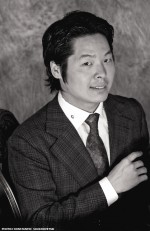Column Name
Title
Recent months have seen much publicity and interest in the new Historical Performance program that will begin next fall at Juilliard; master classes by William Christie and Jordi Savall have already given Juilliard students their first exposure to the instruments and repertoire they will be able to explore in depth beginning next year. Of course, the harpsichord department at Juilliard has long been a unique force in fuelling passion for the music of the 17th and 18th centuries. But with the added areas of Baroque strings and woodwinds, and the generous support and tremendous publicity the new program is receiving, now would be a renewed opportunity for members of the Juilliard community to remember those who made all this excitement possible in the first place, some 80 years ago. As 2009 marks the 50th anniversary of the death (and 130th anniversary of the birth) of the most celebrated among those pioneers—Wanda Landowska (1879-1959), the woman who brought back the harpsichord (and Bach’s “Goldberg” Variations along with it) to the concert platform and general musical scene after its widespread neglect in the 19th century—it seems only timely that we render a little homage to her.
Body
Acknowledged by many as “the high priestess of the harpsichord,” Landowska long reigned as the godmother of 20th-century harpsichordists, through the direct influence she held over them, the power of her personality, and her active, lifelong career that symbolized the resurrection of the harpsichord. Juilliard’s own Lionel Party is among those who consider themselves in the tradition of Landowska.
Of the many aspects of Landowska’s legacy, what seems particularly fascinating today is her caution against certain ways of thinking that might be tempting for enthusiasts of music of the past to embrace: namely, the dogma of authenticity, deliberate impersonalization, and obsession with the historical truth. Much research has been done that contributes to historically proximate instrument manufacturing, playing, and singing, and the amount of information regarding every element of the historical performance is overwhelming. However, as Landowska reminds us, it must be remembered that musicianship, and musicianship alone, has the final say in any performance. In Landowska on Music, a collection of her writings edited by Denise Restout, she confesses: “How can we men of today have the presumption to believe that we feel and play exactly like Bach, Couperin, their predecessors and contemporaries? It is altogether folly, lack of intelligence and of assimilated culture … I am sure that what I am doing in regard to sonority, registration, etc., is very far from the historical truth. To the purists who say to me, ‘This was done in such a manner; you should conform, etc.,’ I answer, ‘Leave me alone! Criticize as much as you please, but do not shout. I need peace and silence around me and those grains of irony and skepticism, which are as necessary to research as salt is to food.’
“At no time in the course of my work have I ever tried to reproduce exactly what the old masters did. Instead, I study, I scrutinize, I love, and I recreate … If Rameau himself would rise from his grave to demand of me some changes in my interpretation of his Dauphine, I would answer, ‘You gave birth to it; it is beautiful. But now leave me alone with it. You have nothing more to say; go away!’”
Reliance on the early treatises may only have confused us more, as all teachings are but opinions of men. The perpetual disagreement between Johann Joachim Quantz and C.P.E. Bach, two highly esteemed teachers from the 18th century, on how to play a dotted rhythm, is a revealing example.
Indeed, in anyone’s artistic endeavor, what will speak to and move the human heart is the honest pursuit of beauty and the sincerity of expression—not purist pedantry or haughty historicity, nor the slickly stylized smartness of a precise but impersonal performance. Let us thoroughly acquaint ourselves with the teachings from the past, then simply make the music beautiful, lest the good intentions of historical correctness, like political correctness, make us afraid to express things within. For music comes from within.





